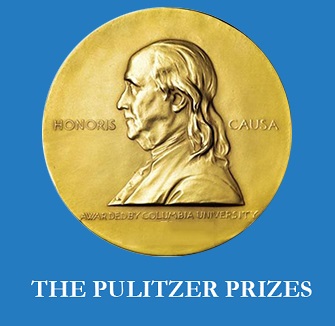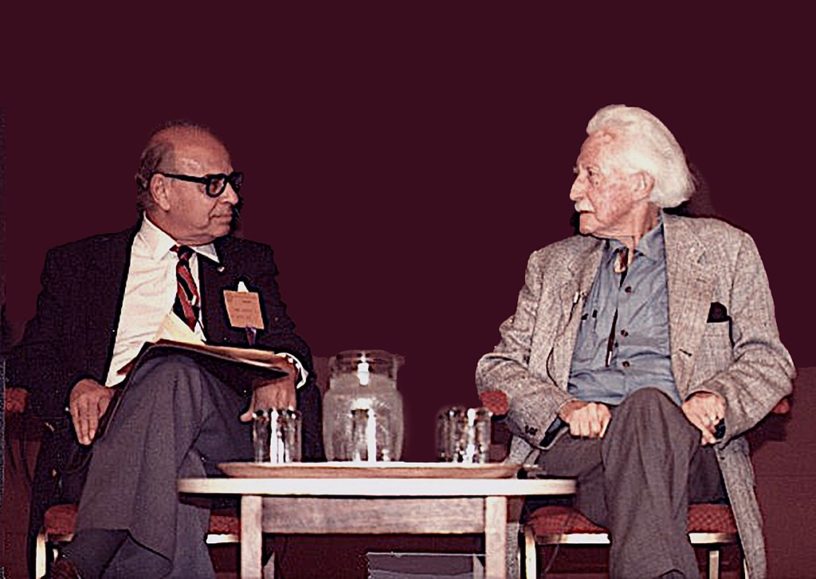Top 15 Amazing Facts about Erik Erikson
*Updated by Vanessa R on June 2023

Erik Erikson by Rupali.talan from Wikimedia Commons
Homburger, Erik Erikson was a German-born psychologist and psychoanalyst. He is most recognized for his ideas about how humans evolve psychologically. However, he may be most remembered for having coined the expression “identity crisis.” Erikson taught in prestigious universities like Yale and Harvard despite not having a Ph.D. or even a bachelor’s degree.
Here are 15 facts you probably didn’t know about him.
1. He rose to fame because of his theories
The date of Erik Erikson’s birth is June 15, 1902. He went by the full name Erik Homburger Erikson. On May 12th, 1994, he died. He was a well-known psychologist and psychoanalyst. This man gained notoriety for his theories of how humans evolve psychologically.
2. He didn’t have a bachelor’s degree

Yale Art Gallery by A.karim.kh from Wikimedia Commons
Many people believe that those without a bachelor’s degree won’t become effective professors. This viewpoint is completely incorrect because Erikson, who never had a bachelor’s degree, held a professorship at prestigious institutions like Yale and Harvard.
3. He never knew who his real father was
Karla Abrahamsen, Erikson’s mother, descended from a famous Jewish family in Copenhagen, Denmark. She had been separated from her husband, Jewish stockbroker Valdemar Isidor Salomonsen, for a while when Erik was conceived.
The only thing that is known about Erik’s real father is that he was a Dane who was not Jewish. Erik Salomonsen was born on June 15, 1902, in Frankfurt am Main, Germany, when his mother Karla left after learning she was pregnant. She left because she had Erik outside of marriage, and it was never revealed who Erik’s biological father was.
4. His paediatrician became his stepfather
Karla relocated to Karlsruhe, Germany after giving birth to Erik and through nursing school there. She wed Theodor Homburger, a Jew who was Erik’s paediatrician, in 1905.
Erik Salomonsen’s name was changed to Erik Homburger in 1908, and his stepfather legally adopted him in 1911. Erik was only informed of the truth in his late youth; he was resentful of the lie his whole life. Karla and Theodor told Erik that Theodor was his biological father.
5. Erik was an artist before he became a psychologist

Gymnasium Dante-Gymnasium by Gamsbart from Wikimedia Commons
His primary areas of interest in Das Humanistische Gymnasium were art, history, and languages, but he lacked a general enthusiasm for learning and graduated without distinction. After graduation, much to the delight of his mother and her friends, he chose to attend art school in Munich rather than medical school, as his stepfather had wanted.
Erik dropped out of school and began a protracted time of travelling around Germany and Italy as a travelling artist with his boyhood buddy Peter Blos and others because he was unsure of his calling and where he belonged in society. It was usual for German kids from wealthy households to spend a year “wandering.” He frequently exchanged or sold his sketches to people he met while travelling.
Erik eventually concluded that he would never be a full-time artist, and he went back to Karlsruhe and started teaching art. Erik was employed by an heiress to draw and subsequently tutor her children while he was working at his teaching job. Erik did an excellent job with these kids, and many other families close to Anna eventually recruited him.
6. He was friends with Sigmund Freud’s daughter
He was both a student and a teacher of the arts throughout his formative years. When he was an Austrian teacher in a private school in Vienna, he was friends with Anna Freud, the daughter of Sigmund Freud.
7. He became a Christian because of his wife
Erik made the decision to wed Joan Serson Erikson, a Canadian-born lady, in 1930. When Erik married Joan, he changed his belief to become a Christian. Erik and Joan Serson Erikson got married and had four kids together. The four kids were Neil Erikson, Sue Erikson Bloland, Jon Erikson, and Kai T. Erikson.
8. Erikson became the first child psychoanalyst in Boston

Massachusetts General Hospital by Frank O. Branzetti from Wikimedia Commons
Erikson established himself as the country’s first child psychotherapist in Boston and worked at the Judge Baker Guidance Center, Massachusetts General Hospital, Harvard Medical School, and Psychological Clinic. He was doing this as he built a unique name for himself as a physician.
Erikson left Harvard in 1936 and began working at Yale University, where he taught in medical school and worked at the Institute of Social Relations.
He left Yale in 1939, and the Eriksons relocated to California. Erik had been invited to join a group working on a longitudinal study of child development for the Institute of Child Welfare at the University of California, Berkeley. He also started a private child psychoanalysis practice in San Francisco.
9. He studied psychoanalysis under Anna Freud
When Erikson was 25 years old, his friend Peter Blos invited him to Vienna to work as an art teacher at the tiny Burlingham-Rosenfeld School for kids whose wealthy parents were receiving psychoanalysis from Anna Freud, Sigmund Freud’s daughter.
Inspiring Erikson to pursue psychoanalysis at the Vienna Psychoanalytic Institute, where eminent analysts August Aichhorn, Heinz Hartmann, and Paul Federn were among those who oversaw his theoretical studies, Anna saw Erikson’s sensitivity to children at the school.
He received trained analysis with Anna Freud and focused on kid analysis. Edward Bibring and Helene Deutsch oversaw his early care as an adult. He also studied the Montessori educational approach, which placed a strong emphasis on the growth of the child.
10. Erikson is recognized as one of the founders of ego psychology

The Pulitzer prizes by Vladimir Babenko from Wikimedia Commons
Erikson is recognized as one of the founders of ego psychology, which stressed the ego’s function as more than just the more than servant of the id. Erikson accepted Freud’s theory, but he placed more emphasis on the function of the ego, specifically the development of the self, and less on the interaction between parents and children.
Erikson believed that a child’s surroundings significantly affected their ability to develop, adjust, and find their identity. For Gandhi’s Truth (1969), which concentrated more on his theory as applied to later stages of the life cycle, Erikson earned a Pulitzer Prize and a US National Book Award in the philosophy and religion category.
Upon appointment in 1960, Erikson received the AM (hon), and in 1978, the LLD (hon). In 1970, he became a Professor Emeritus. On the American Psychological Association’s list of the top 100 psychologists of the 20th century, Erik Erikson is ranked number twelve.
11. Erikson was a faculty member at Harvard University
At Harvard University, one of the most prestigious academic institutions in the world, Erik Erikson had a prominent position as a faculty member. He shared his considerable knowledge and expertise in the areas of developmental psychology and psychoanalysis with both students and colleagues during his time there.
Erikson was able to enhance psychological education and research through his position as a faculty member. His association with Harvard University secured his reputation as a leading authority in the field, and his teachings continue to influence and advance knowledge of human growth and behaviour.
12. He wrote several books

Rob Bogaerts / Anefo, CC0, via Wikimedia Commons
Through his active writing career, which included the publication of several important works, Erik Erikson made a lasting impression. His writings explored a wide range of subjects, including identity creation, the complexities of human life, and childhood development. His works include “Childhood and Society” (1950), ground-breaking research on the social and cultural influences on childhood development, and “Identity: Youth and Crisis” (1968), which shed light on the difficulties of authenticity around adolescence.
Erikson’s publications not only extended our understanding of psychological growth but also offered useful advice for professionals in the disciplines of psychology, education, and social work.
13. Erikson created the term “identity crisis”
The term “identity crisis” was first used by Erik Erikson. He highlighted the psychological turmoil that teenagers go through as they try to develop a strong sense of self in his writing. During this moment of intense study, analysis, and decision-making, Erikson developed the phrase “identity crisis.”
14. Erikson struggled with his own identity
In part because of his mixed heritage, Erik Erikson struggled with issues of identity. He felt confused and divided as a result of having a Jewish mother and a Danish father when he was born.
Erikson’s mixed feelings about his Danish and Jewish heritage had a huge impact on how he viewed the process of identity creation. His intense curiosity about examining the complexity of identity and the psychological difficulties people encounter while navigating their cultural backgrounds and history was likely impacted by these issues.
15. Erikson continued to work and write until his death on May 12, 1994
Until his death on May 12, 1994, Erik Erikson remained committed to his job and passionate about understanding human development. He kept up his writing, research, and contributions to psychology throughout his lifetime. Erikson was able to leave behind a lasting and important legacy thanks to his dedication to his academics and his successful writing career.
His ground-breaking theories, such as the idea of psychosocial development and the investigation of identity, continue to shape our understanding of human nature and have a long-lasting influence on professions like psychology, education, and social work.
Planning a trip to Paris ? Get ready !
These are Amazon’s best-selling travel products that you may need for coming to Paris.
Bookstore
- The best travel book : Rick Steves – Paris 2023 – Learn more here
- Fodor’s Paris 2024 – Learn more here
Travel Gear
- Venture Pal Lightweight Backpack – Learn more here
- Samsonite Winfield 2 28″ Luggage – Learn more here
- Swig Savvy’s Stainless Steel Insulated Water Bottle – Learn more here
Check Amazon’s best-seller list for the most popular travel accessories. We sometimes read this list just to find out what new travel products people are buying.











